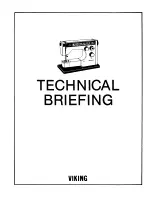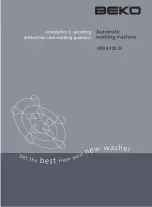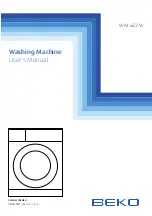
13
O
P
E
R
A
T
I
N
G
M
A
N
U
A
L
GB
of the maximum value. In case there are higher pressures, it is necessary to apply a reduction valve with a safety valve.
The tools may be repaired solely with original spare parts, which are specifi ed by the manufacturer or their representative. Repairs
should be realised by experts who are authorised by the manufacturer. ATTENTION! Experts are meant to be persons who in a
result of a professional training or experience have suffi cient knowledge regarding machines used to drive connecting elements
and have suffi cient knowledge of appropriate industrial safety regulations, accident prevention regulations, directives and general
technical regulations (e.g. CEN and CENELEC), in order to guarantee safe working conditions for the tools whose purpose is to
drive connecting elements.
Racks supporting the tools which are installed, for example, in the working table should be designed and manufactured by the
producer of the racks in a manner which guarantees safe installation of the tool, in accordance with its purpose and in a manner
that prevents its damage, deformation or movement.
Maintenance of the tool is only possible using the lubricants specifi ed in the manual.
Tools designed to drive connecting elements with contact actuation or constant contact actuation which are marked with the sym-
bol „Do not use on scaff olds or ladders” must not be used to certain purposes. For example, if a change of the position where the
connecting elements are driven requires using scaff olds, stairs, ladders or constructions that resemble ladders, e.g. roof rules, to
close boxes or cages, to fasten transport safety systems, e.g. in vehicles and wagons.
The specifi ed noise values are characteristic values for the tool and they do not apply to the noise emitted in the location of their
operation. The noise emitted in the location of their operation will be dependent e.g. upon the working environment, the processed
object, the support of the processed object. Depending upon the working conditions at the workstation and the shape of the pro-
cessed object, it is possible it will be necessary to apply individual means of noise reduction, such as placing of the processed
objects upon noise reducing supports, pressing or covering of the processed objects. Regulation of the pressure to the minimum
value that is suffi cient to perform the task. In special cases, it is necessary to wear hearing protections.
The specifi ed values of vibrations are characteristic for the tool and they do not refl ect manual action upon the tool during its
operation. Each manual action upon the tool during operation of the tool will be dependent e.g. upon the strength of the grip, the
pressure, the direction of work, adjustment of power supply, the processed object or the support of the processed object.
Before each operation, it is necessary to revise whether the safety device mechanism and the release mechanism function prop-
erly and whether all the screws and nuts are tightened.
Do not modify any elements of the machine without previous authorisation issued by the manufacturer.
Do not dismantle any elements of the tool, such as the safety device; do not cause their malfunction.
Do not perform any „emergency repairs” without appropriate tools and equipment.
It is recommended that the tool be subject to appropriate maintenance actions regularly, in accordance with instructions specifi ed
by the manufacturer.
Avoid impairment or damage of the machine, e.g. as a result of perforation or engraving, modifi cations that has not been author-
ised by the manufacturer, leading upon templates made of hard materials, e.g. steel, dropping or pushing along the fl oor, using
the tool as a hammer, application of excessive strength of any kind.
Do not direct a working tool towards yourself or any other person
.
During work, the tool must be held in such a manner that prevents any injuries of the head or the body in the event of a possible
rough movement of the tool which might be caused by any disturbance in power supply or by hard parts of the processed object.
Do not start the machine towards empty space. It will permit to avoid a danger caused by freely moving connecting elements and
a danger related to excessive stress in the tool.
While carrying the tool, it must be disconnected from the power supply system, particularly when it is necessary to use ladders
or to adopt an unusual position. At the workplace, the tool may be carried solely by the handle and it is strictly prohibited to carry
it with the trigger pressed.
Give consideration to the conditions at the workplace. The connecting elements may penetrate thin processed objects or slip down
the corners or edges of the processed objects and thus be dangerous for persons.
For the purpose of personal safety, use protective equipment, such as hearing or sight protections.
USE OF THE TOOL
Before each use of the tool, make sure that no element of the pneumatic system is damaged. In the case any damage is detected,
it must be immediately replaced with a new, undamaged element of the system.
Before each use of the pneumatic system, it is necessary to dry the humidity condensed inside the tool, compressor and the
conduits.
Connection of the tool to the pneumatic system
Insert few drops of oil of SAE 10 viscosity, to air inlet.
Screw in proper tip to the thread of air inlet the that allows connecting air supply hose, tightly and securely (II).
Make sure that the tool magazine is empty, if not, empty it. This will allow avoiding the risk caused by accidentally ejected fas-
teners.
Figure shows the recommended method of connecting the tool to pneumatic system. Method presented will ensure the most
eff ective use of tool and will also prolong its service life (IV).
Connect the tool to pneumatic system using a hose with internal diameter shown in the table. Make sure the strength of hose is


































